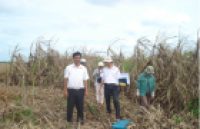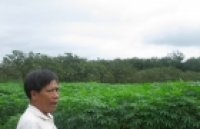| Ethnic ancestry and smoking, farming of wine grapes in semiarid regions, and the potentials of Manihot multifida in medicine use. |
|
Laboratório de Sistemática e Tafonomia de Vertebrados Fósseis, Departamento de Geologia e Paleontologia do Museu Nacional/UFRJ, Quinta da Boa Vista, s/n, São Cristóvão, 20940-040 Rio de Janeiro, RJ, Brasil. Health Sciences is one of the areas that the Annals of the Brazilian Academy of Sciences (AABC) will be stimulating. The purpose is to get scientists in Brazil and from abroad to submit manuscripts in a greater variety of fields than what we have been currently publishing. |
An Acad Bras Cienc. 2015 Mar;87(1):1-2. http://dx.doi.org/10.1590/0001-37652015871
Laboratório de Sistemática e Tafonomia de Vertebrados Fósseis, Departamento de Geologia e Paleontologia do Museu Nacional/UFRJ, Quinta da Boa Vista, s/n, São Cristóvão, 20940-040 Rio de Janeiro, RJ, Brasil
Health Sciences is one of the areas that the Annals of the Brazilian Academy of Sciences (AABC) will be stimulating. The purpose is to get scientists in Brazil and from abroad to submit manuscripts in a greater variety of fields than what we have been currently publishing. In the last few years, it has been possible to find papers in the AABC which deal with studies on malignant peripheral nerve shear tumors (Cunha et al. 2013), the toxicity of Vancomycin (Bruniera et al. 2014), and antioxidant and antimicrobial activities of essential oils (Boligon et al. 2014), to cite a few. In this issue of the AABC, we are publishing a contribution that is a little bit different from previous ones. Souza et al. (2015) have investigated the relation between ethnic ancestry and the habit of smoking.
As has been demonstrated in the past, several countries have established that ethnics and smoking can go side by side (e.g., Kahende et al. 2011). As pointed out in their paper (Souza et al. 2015), some studies indicate that white Americans are more likely to smoke than the black population (e.g., Ward et al 2002). In Brazil, however, the opposite has been shown: the tendency is that the white population smokes less than others (e.g., INCA 2011). Souza et al. (2015) addressed this issue from a genetic point of view, trying to establish potential associations between smoking habits with genetically defined ancestry.
Another interesting paper published in this issue of the AABC is an evaluation of organic farming of wine grapes on Ultisol in northeastern Brazil (Feitosa et al. 2015). Research on how to promote fertility in soils for the purpose of increasing productivity is a must in every country these days and there are different ways to do that (e.g., Doran 2002, Carvalho et al. 2014). Despite the fact that wine grapes are not traditionally farmed in the northeastern part of Brazil, in recent years such production is growing, particularly in the São Francisco Valley. Feitosa et al. (2015) have carried out a detailed soil analysis in an area of Pernambuco where viniculture has become an important economic factor. This is one of the first studies focusing on wine production in this area and more are needed in order to understand what can be done to assure a continuous production, consolidating this activity in this portion of the country.
Several plants are commonly used by local populations to treat a variety of diseases (e.g., Deharo et al. 2001, Agra et al. 2013, Florentino et al. 2013). This is also the case of Manihot multifida. This genus belongs to the family Euphorbiaceae and it is rather diverse with dozens of species being found in several continents. Quite commonly the species Manihot multifida (sometimes also referred to the genus Jatropha) is used in the treatment of several illnesses, ranging from gastrointestinal problems to skin infections (e.g., Kosasi et al. 1989). In order to test its effectiveness in medical treatment, Fabri et al. (2015) evaluated the in vitro antioxidant and antimicrobial properties of this plant. |
|
|
|
[ Tin tức liên quan ]___________________________________________________
|


 Curently online :
Curently online :
 Total visitors :
Total visitors :


